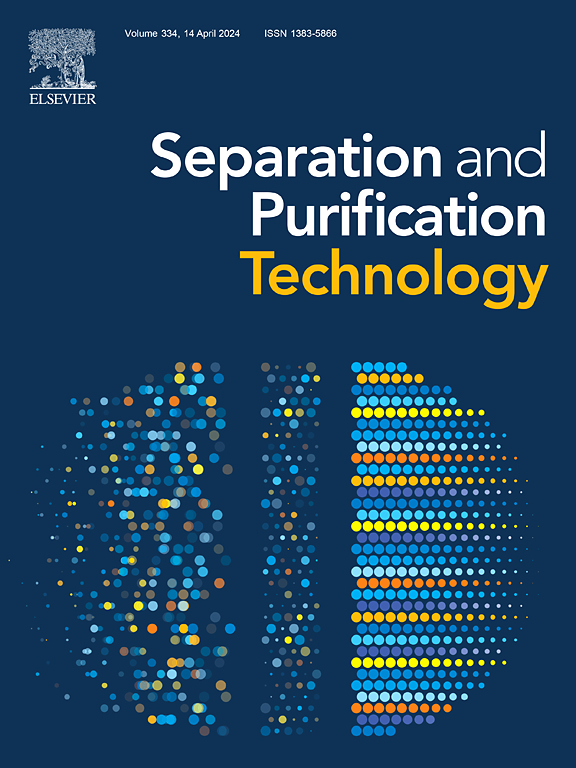Techno-economic analysis of novel lignin extraction from black liquor
IF 8.1
1区 工程技术
Q1 ENGINEERING, CHEMICAL
引用次数: 0
Abstract
Black liquor in a pulp mill is rich in lignin which is typically combusted during the kraft chemical recovery process in a kraft recovery boiler. Lignin valorization technologies such as LignoBoost have been developed which use carbon dioxide to recover lignin from black liquor. Lignin valorization may provide a platform chemical for sustainable fuels. The current work examines sodium bisulfate, a common spent acid from pulp mill bleaching operations, as an in-house alternative for pulp mills to precipitate lignin for valorization. Laboratory scale experimentation demonstrated that sodium bisulfate may substitute carbon dioxide in yielding lignin from black liquor. Empirical results informed a process simulation which demonstrated large-scale technical feasibility. For a bleaching mill producing 1,000 metric tons bleached pulp per day mill to produce 140 metric tons of lignin per day, the operational loads increase 2.3 metric tons/hour natural gas and consumption of all sodium bisulfate generated in bleaching are major process consequences. Techno-economic analysis yielded a minimum selling price of $426/ton of lignin when carbon dioxide was used and a minimum selling price of $398/ton of lignin when recycling bleaching spent acid was used. Sensitivity analysis revealed that lignin production and bisulfate usage as drivers for economic performance.


求助全文
约1分钟内获得全文
求助全文
来源期刊

Separation and Purification Technology
工程技术-工程:化工
CiteScore
14.00
自引率
12.80%
发文量
2347
审稿时长
43 days
期刊介绍:
Separation and Purification Technology is a premier journal committed to sharing innovative methods for separation and purification in chemical and environmental engineering, encompassing both homogeneous solutions and heterogeneous mixtures. Our scope includes the separation and/or purification of liquids, vapors, and gases, as well as carbon capture and separation techniques. However, it's important to note that methods solely intended for analytical purposes are not within the scope of the journal. Additionally, disciplines such as soil science, polymer science, and metallurgy fall outside the purview of Separation and Purification Technology. Join us in advancing the field of separation and purification methods for sustainable solutions in chemical and environmental engineering.
 求助内容:
求助内容: 应助结果提醒方式:
应助结果提醒方式:


